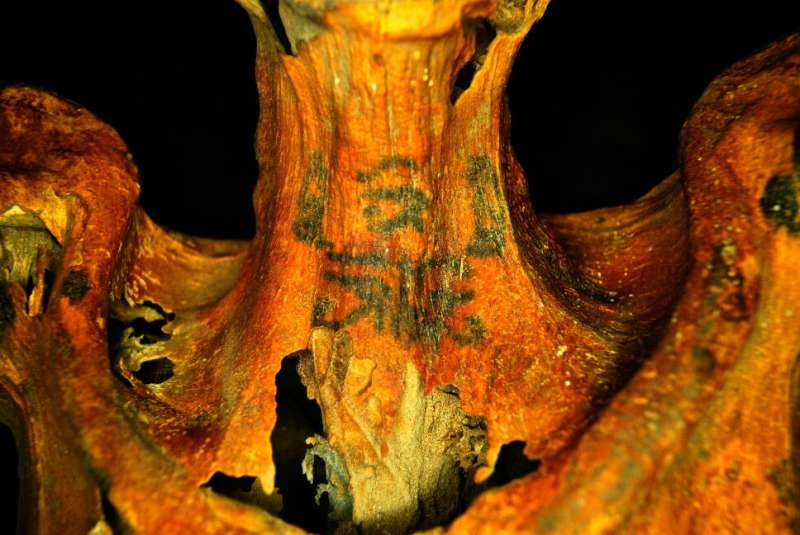November 11, 2022 report
Tattoos found on ancient Egyptian women appear to ask for protection during childbirth

A pair of researchers, one with the University of Missouri at Saint Louis, the other at Johns Hopkins University, has found evidence of tattoos on the bodies of women who lived in Egypt thousands of years ago. In their paper published in The Journal of Egyptian Archaeology, Marie-Lys Arnette and Anne Austin, describe the tattoos and outline their ideas regarding why the women had them.
Back in the early 1920s, archaeologists discovered an ancient town called Deir el-Medina near the Nile River in Egypt. Prior research has shown the town was active over the years 1550 to 1070 BC, and served as a community to house the men (and their families) who were building tombs for Egyptian royalty. Over the years, researchers have found that the town was neatly planned with even streets and homes for the people that lived there. In this new effort, the researchers were studying mummies found in the town when they came across evidence of tattoos.
The researchers were studying two female mummies removed from two tombs in the village. One had been looted and the mummy unwrapped. In studying the mummified skin, the researchers found evidence of a tattoo. They were able to make out representations of a bowl, a purification ritual and a depiction of Bes, an Egyptian God whose role was to protect women and children, most especially during childbirth.
The second mummy, still wrapped, was studied using infrared photography (archaeologists no longer unwrap mummies). It turned out to be the remains of a middle-aged woman with another tattoo. This tattoo showed a wedjat (eye of Horace) and Bes, this time wearing a crown made of feathers. It also had a zigzag line beneath the other figures, which likely represented a marsh, where people of the time would go to cool themselves and at times to ease pain, such as would be felt during childbirth. The researchers suggest the two tattoos appear to represent a request by those bearing them for protection during childbirth.
The researchers note that clay figurines have also been found at the site depicting tattoos on the lower back and upper thighs of women, which also had images of Bes.
More information: Anne Austin et al, Of Ink and Clay: Tattooed Mummified Human Remains and Female Figurines from Deir el-Medina, The Journal of Egyptian Archaeology (2022). DOI: 10.1177/03075133221130089
© 2022 Science X Network




















